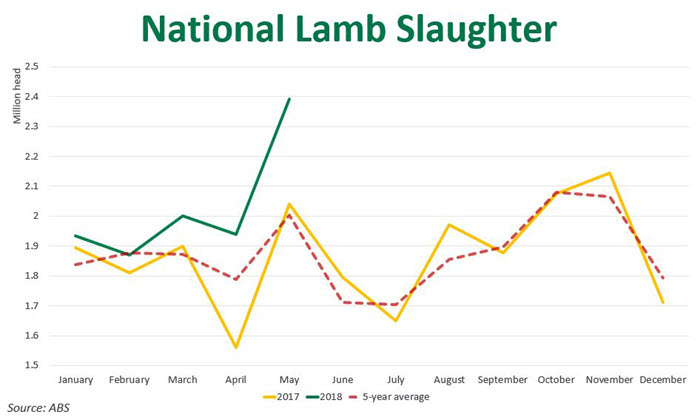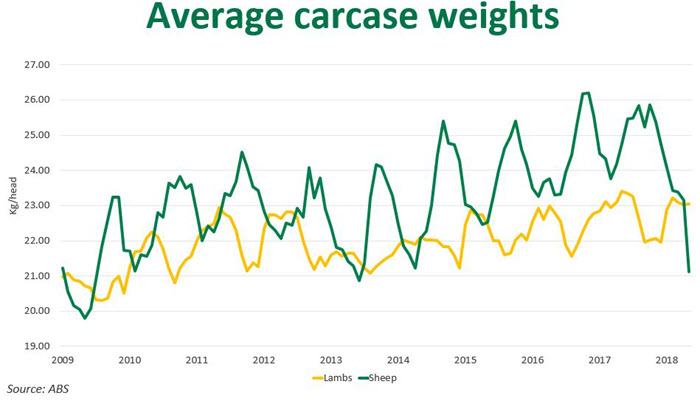Subscribe to The Weekly e-newsletter
For in-depth red meat market news, information and analysis.
May lamb slaughter eclipses 50-year high
18 July 2018
Persistent drought conditions pushed May lamb slaughter above 2.39 million head, surpassing a five-decade high set in October 1970.
Key points
- May lamb slaughter increased 17% year-on-year, to 2.39 million head, driven by NSW and VIC.
- May sheep slaughter totalled 830,000 head, up 56% on May 2017.
- Lamb carcase weights remained stable at 23kg/head, while sheep carcase weights dropped 2kg since April, to 21kg/head
Lambs in plentiful supply

Increased turnoff in late autumn saw lamb slaughter reach levels not seen since the early 1970’s, when the Australian sheep flock peaked at 180 million head (compared to roughly 72 million today). While this comparison illustrates just how difficult the current seasonal conditions are, it is also a demonstration of an increasingly productive ewe flock.
Year-to-May lamb slaughter totalled 10.1 million head, increasing 10% year-on-year. Processors in Victoria slaughtered just shy of 1 million more lambs when compared to 2017 numbers, however, part of this increase can be attributed to the plant closure at Thomas Foods International in South Australia. Elsewhere across the country, lamb slaughter also increased in NSW (up 12%) and WA (up 10%).
Sheep slaughter jumps
While many producers outlined their intentions to expand their flocks at the start of the year, a lack of pasture has hampered their ability to do so. Year-to-May sheep slaughter was up 25% year-on-year, at 3.6 million head. The rise was driven by increased slaughter in NSW (up 32%) and VIC (up 22%), however, WA saw the strongest lift (up 43%).
Sheep carcase weights show signs of a poor season
Limited pasture availability and soaring feed prices have translated into falling sheep carcase weights, which dropped over 2kg since April, to 21kg/head. On the other hand, record prices for finished lambs have provided an incentive for producers to continue supplementary feeding programs, with lamb carcase weights remaining firm above 23kg/head.



